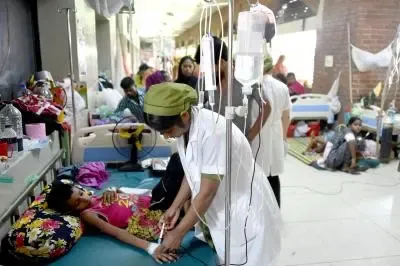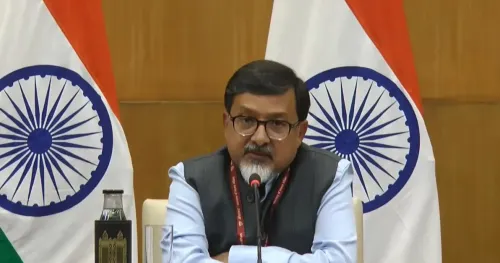What’s the Latest on Dengue Deaths in Bangladesh?

Synopsis
Key Takeaways
- Three recent dengue deaths have raised the total to 76 in 2025.
- Health officials report increased severity of cases.
- WHO has provided essential medical supplies.
- Public vigilance is crucial in seeking immediate care.
- Understanding symptoms can aid in early detection.
Dhaka, July 27 (NationPress) Three additional individuals have succumbed to dengue in Bangladesh on Sunday, elevating the death toll from this mosquito-borne illness in 2025 to 76.
The recent deaths were recorded in the Dhaka South City Corporation (DSCC), Dhaka North City Corporation (DNCC), and Rajshahi Division.
In total, 74 dengue cases emerged in Barishal Division, 72 in Chattogram Division, 67 in Dhaka Division, 54 in Dhaka South City Corporation, 51 in Rajshahi, 32 in Dhaka North City Corporation, 28 in Khulna Division, 16 in Rangpur Division, 11 in Mymensingh, and four in Sylhet Division, as reported by United News of Bangladesh, citing the Directorate General of Health Services (DGHS).
During this period, 409 additional patients were admitted due to viral fever, thereby increasing the total number of cases in 2025 to 19,529. Currently, 1,230 patients are receiving treatment in various hospitals across Bangladesh.
In 2024, a total of 575 individuals died from dengue, with 101,214 cases reported, and 100,040 recoveries recorded.
On July 9, Abu Jafor, the Director General of DGHS, addressed the evolving nature of dengue, which has complicated patient treatment.
While speaking at a meeting in the DGHS conference room located in Mohakhali, he mentioned, "The current strain of dengue is no longer manageable as it once was; many patients are rapidly becoming critically ill."
Jafor added, "An increasing number of patients are arriving with severe symptoms that necessitate intensive monitoring and care. In such scenarios, portable ultrasound and bedside hematocrit machines are essential for prompt diagnosis and effective treatment strategies."
He emphasized that these tools facilitate quicker clinical procedures and mitigate complications by enabling rapid diagnosis. He urged the public to remain vigilant and seek medical help immediately if they experience fever.
The WHO Bangladesh has delivered 1,600 units of medical supplies related to dengue management, along with 21 bedside hematocrit machines and eight portable ultrasound machines to the DGHS. WHO representatives reaffirmed their commitment to assist Bangladesh in combating dengue.









